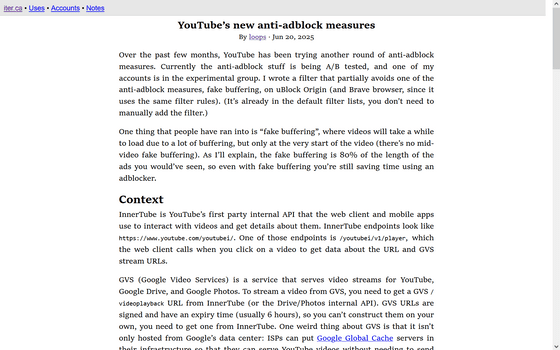What is YouTube's new ad blocking strategy, 'Fake Buffering'?

YouTube is taking steps to combat ad blockers every day, and it has been discovered that a new technique is being used to intentionally delay the start of video playback for users who block ads.
YouTube's new anti-adblock measures
https://iter.ca/post/yt-adblock/

YouTube is testing a technique called 'fake buffering' on random users, which makes the initial buffering (preload) of a video appear longer than it actually is.
This buffering lasts for 80% of the playback time of the ad inserted at the beginning of the video. For users without ad blockers, the buffering will end while the ad is playing, but users with ad blockers will be affected by the buffering instead of the ad. For this reason, only users with ad blockers will feel that the video is taking a while to load.

Technically, YouTube uses an internal API called 'InnerTube' to get video data, but the actual video is delivered by 'GVS (Google Video Services)' and it can be explained that it receives the delay command in addition to the video.
Initially, YouTube streamed videos by specifying a video range to GVS with query parameters, and GVS returned the video content in that range. However, YouTube later introduced a system called SABR (Server Adaptive Bit Rate) to improve this method. One of the features supported by SABR is that the server sends a delay command to the client, instructing it to wait a certain amount of time and then retry instead of sending video/audio data. This is said to be causing fake buffering.
InnerTube commands a delay for the initial video request (for the ad, not the content) of 80% of the ad duration. For example, if the ad is 15 seconds long, blocking the ad will cause a 12 second delay. If a 6 second non-skippable ad and a 15 second non-skippable ad are shown at the same time, the delay will be 16.8 seconds.
However, these delays can be partially circumvented by applying filters to your ad blocker. uBlock Origin's default filter list includes a filter created by developer Smitty to avoid fake buffering.
Related Posts:
in Web Service, Posted by log1p_kr







